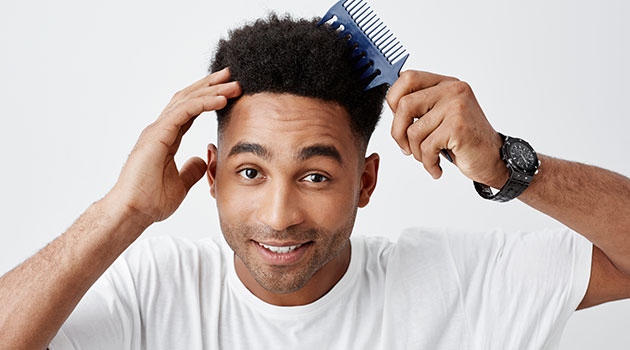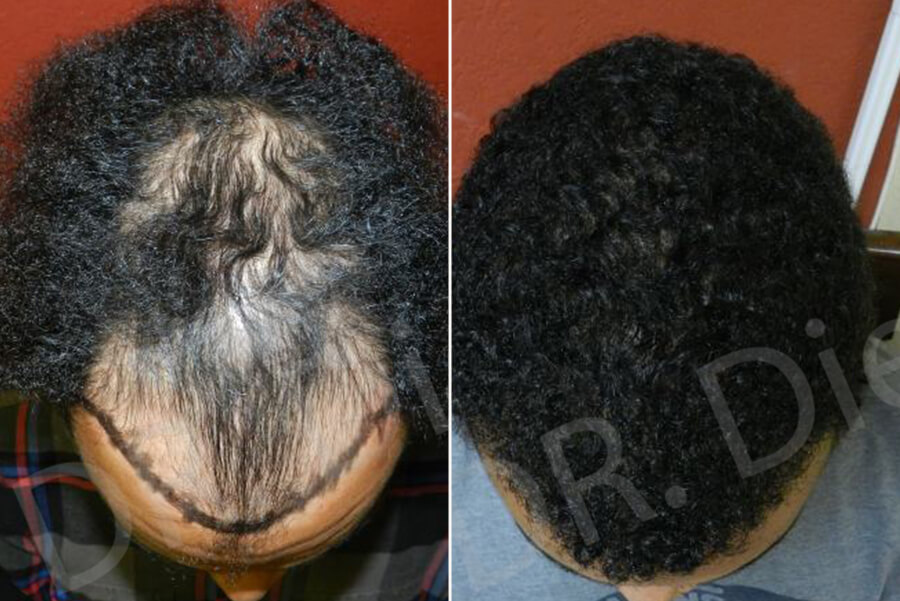


Hair transplantation for individuals with different hair textures and roots presents unique challenges. However, our experienced hair transplant surgeon, Dr. John Diep, has successfully addressed these obstacles through years of practice and specialized modifications, ensuring exceptional results in African-American hair restoration. He has expertise in restoring curly hair which has earned him worldwide recognition, attracting patients from several parts of the globe.

Hair Transplants for African American Are Ideal and Advantageous for Patients:
Hair transplantation for African Americans can be challenging due to the unique root curvature, but our team at Medical Hair Transplant and Aesthetics (MHTA) is skilled at overcoming these obstacles, delivering remarkable results. We specialize in hair restoration for individuals of all ethnic backgrounds, recognizing that hair loss affects everyone.
Dr. John Diep, our surgeon, employs tailored techniques for African-American men and women experiencing hair loss, using cutting-edge procedures for natural results. Our comprehensive approach ensures the highest quality care and successful hair regrowth.
Visit us at Medical Hair Transplant and Aesthetics to address hair loss regardless of ethnicity. Our specialization in African-American hair transplants helps you regain confidence and achieve your desired hair goals. Schedule a complimentary consultation to begin your hair restoration journey today.
Schedule Your Free ConsultationOur African-American hair transplants offer numerous benefits to those seeking to restore their hairline, including:
African American people have lower hair density. Though it makes fewer available follicles for extraction, less hair is enough to achieve adequate coverage in the recipient area.
In an African-American patient, a surgeon or technician can cover a more significant portion of the scalp with fewer follicular units than a white or Asian patient.
The lesser contrast between scalp and hair in African Americans results in a more seamless blend of transplanted areas, reducing any visibility of the skin beneath.
African Americans prefer a straight or slightly curved hairline, allowing for a more effortless and natural appearance when crafted.
If you are looking for effective African-American Hair Transplant near you in San Francisco and Los Gatos, schedule a free consultation now!
Free ConsultationYes, hair transplants effectively combat genetic hair loss in both men and women.
Though slightly complicated, African hair can be transplanted to restore thinning hair, ensuring thicker and fuller hair density with natural growth.
African-American hair transplants pose some challenges, so having a skilled and experienced surgeon performing the procedure using advanced techniques can ensure desired and durable results.